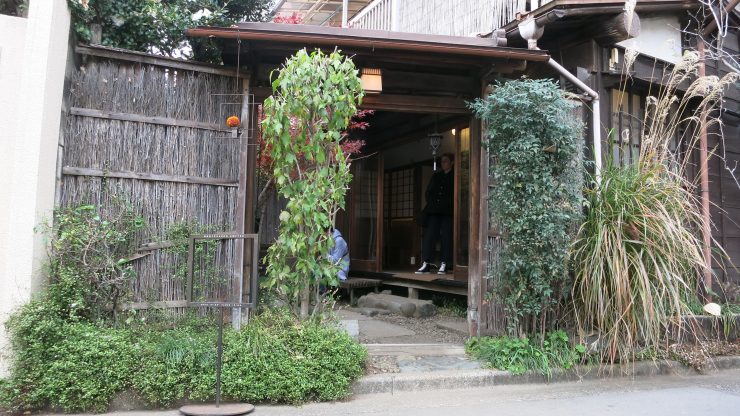
It was nothing more than a little door, leading to a little garden, in front of a little old house in the residential suburbs of Omotesando. Seasonal flowers hung by the entrance, and the trees in the garden changed color with Tokyo’s seasons.
Back then, some five years ago, you had to go looking for it. It was like treasure hunting; you had to get a little lost.
This was Omotesando Koffee.
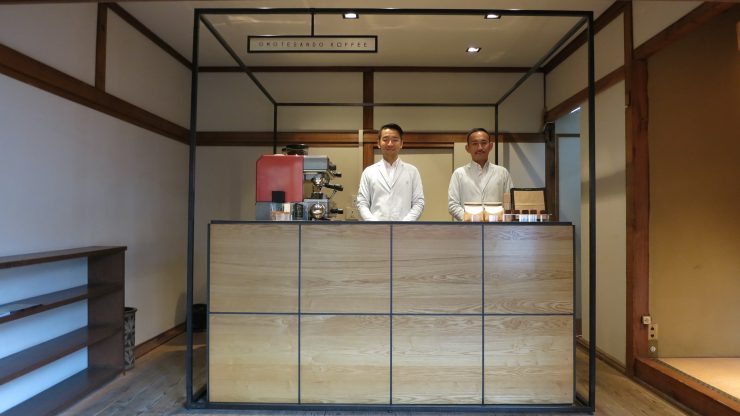
Your first time was always surreal. After you ducked under the doorway and looked up at the old wooden house, you saw a single room of tatami mats, a bonsai plant, and a counter built into a wire-frame cube.
“The main point was the cube-like design,” says Eiichi Kunitomo, the head barista and owner. “And in that cube, a single barista, who serves a single customer.
“The concept is similar to the Japanese tea ceremony. It’s a very minimal space—there’s the person who makes the tea, the person who drinks it, and they’re face to face, sharing an experience.”
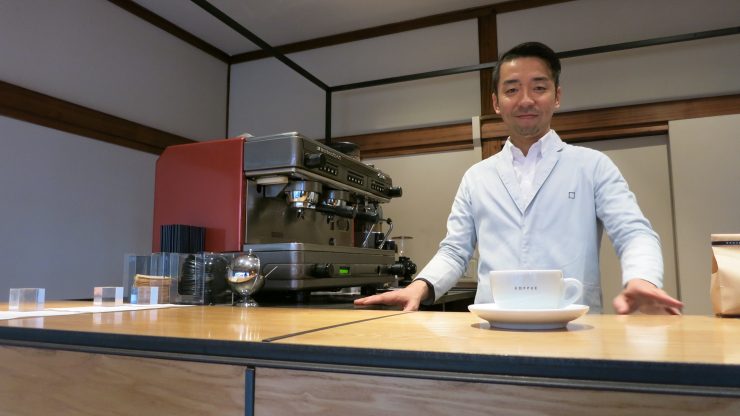
At the counter you’d find a barista. Next to him, an espresso machine, and in front of you, a menu. A lab coat was the craftsman’s uniform, and the minimal environment reflected his single-minded goal.
That barista listened to your order, and asked a simple question:
“Osatou iremasu ka?”
(“Do you take sugar?”)
This was a starting point for communication, a tiny gesture at the heart of the experience, aimed at making each moment meaningful, transparent, and centered on the customer.
Says Kunitomo: “At a lot of restaurants, the espresso machine is set up where you can’t see it. I wanted to create a space where the customer could see everything—an environment open to communication.”
Each detail happened right before your eyes—the grinding, the setting, the drip of the espresso, the milk steaming, the delicate pour of the drink.
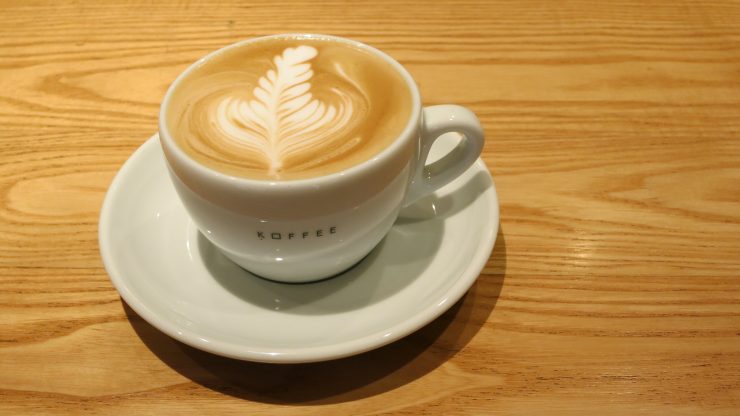
It was a moment in time shared between barista and customer.
The Japanese call it “Ichigo Ichie“: Once in a lifetime.
“This one cup, for this one person, might be the last coffee they ever drink,” explains Kunitomo. “So we want to make the best coffee we can for that particular person every time. Each moment is important, and we might never meet that customer again.”
Kunitomo and Omotesando Koffee see themselves as craftspeople—crafting an experience directed by flavor, and which ultimately tells a story unique to a place, time, and person. In Japanese, it’s called “kishōtenketsu,” the four-part story structure of classic literature—beginning, development, twist, and conclusion.
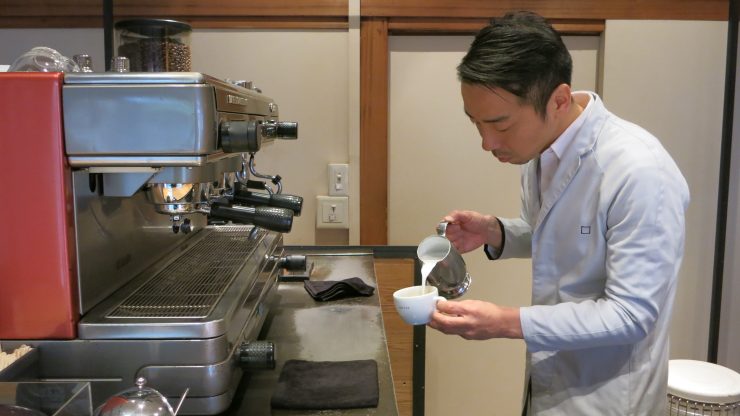
And through Omotesando, Kunitomo looked to bring this to coffee.
“When the experience begins, and before it ends, there are changes in the taste experience. So the first sip, the second sip, and the third sip are slightly different. It’s not about focusing on impact, but rather how to give the coffee a story from start to finish. So the customer feels a change from the first sip to the second, that continues through to the end. And in that single cup, you feel like you’ve experienced a story.”
There is imperceptible thought and feeling in the creation of such an unforgettable experience. And each aspect of Omotesando Koffee—the garden, the house, the cube, the barista, the process, and the coffee—was like a chapter in a story, written in a cup and told through the tastebuds. And each retelling was a little different, every time.
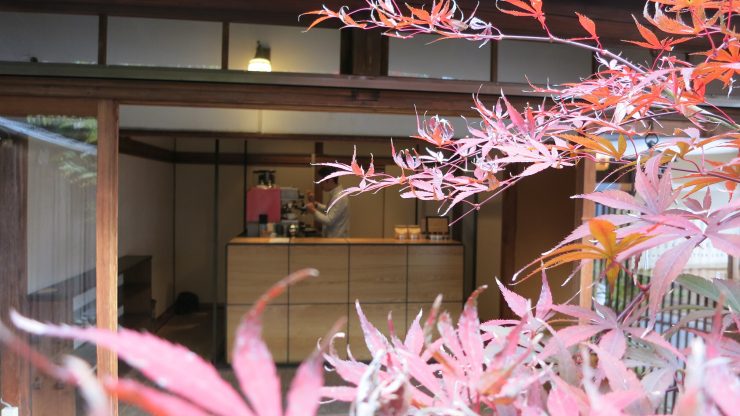
As you sipped from your cup, and took in the season, you were reminded that it’s less the destination, and more the journey.
Yet like with all journeys, and all stories, there is an end, a last page.
And so, on December 30th, 2015, Omotesando Koffee closed its doors.
Kunitomo says that originally, Omotesando was intended as a one-year pop-up shop, in a house soon to be demolished. The building was fragile, unsteady, and ancient, yet also utterly charming.
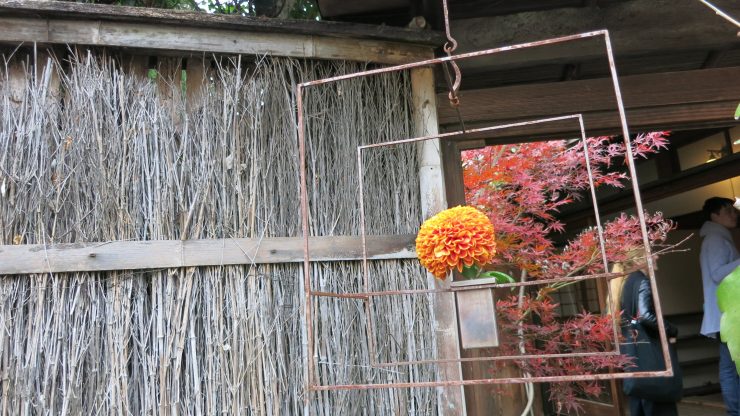
The landlord had said to Kunitomo, “If you’re happy to stay here until we tear it down, it’s yours.”
It was the house the landlord had grown up in, the house he was raised in. And his heart was warmed by the many visitors who stopped by for coffee that first year.
So much so that he let them continue another year. And another. And another.
Five years passed that way, until the creaks and groans of that little house simply couldn’t be ignored. “It’s in the culture,” says Kunitomo. “These old houses have always been wood. In America and Europe, buildings are made with brick and stone, and they last forever. But in Japan, when you build a house with stone, it breaks down in an earthquake. If it’s wood, it’s flexible and it’ll stand in an earthquake, but it can’t keep for hundreds of years. I feel like this mindset is very much a natural part of Japanese people. The idea that there’s an ending to things.”
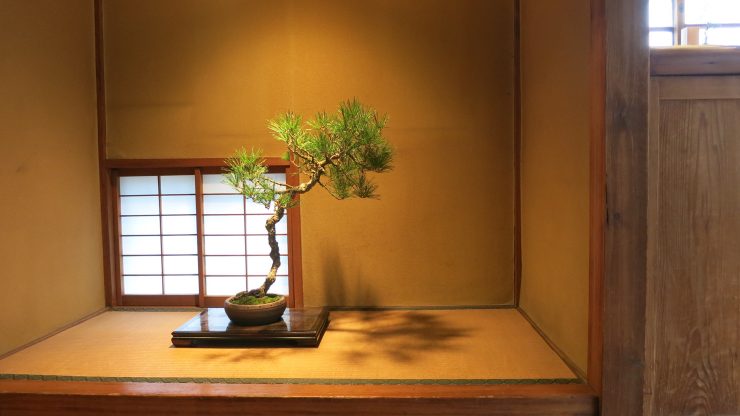
Kunitomo talks of beginnings and endings like the sakura—the cherry blossom—and its short bloom period, a startling beauty accentuated by a transient nature.
So if we think of Omotesando Koffee like a cherry blossom, perhaps we shouldn’t see it for its inevitable end, but rather the five-year bloom we were fortunate to witness.
However, for those lucky enough to live in Hong Kong, 2016 will see the opening of Omotesando Koffee’s first international store—a chance to bring a little Japanese coffee culture to a different Asian market.
And for those in and around Tokyo, there is always Omotesando Koffee’s ever-sleek sibling, Toranomon Koffee.
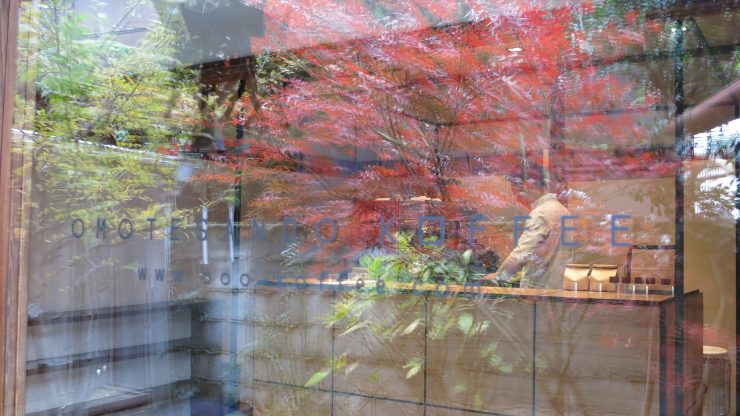
Visit Omotesando Koffee’s official website.
Hengtee Lim (@Hent03) is a Sprudge.com staff writer based in Tokyo. Read more Hengtee Lim on Sprudge.
The post Omotesando Tokyo: Requiem For A Coffee Bar appeared first on Sprudge.

